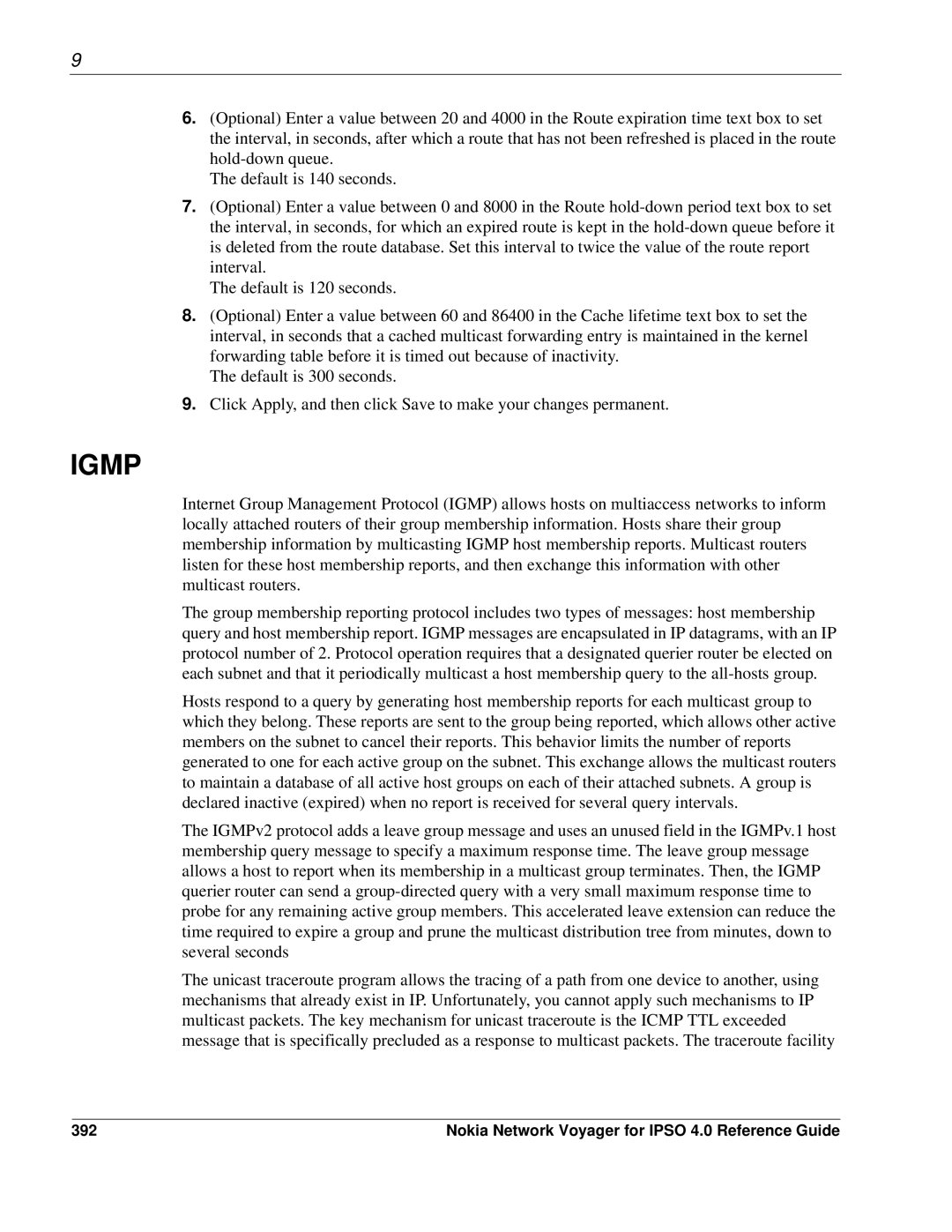
9
6.(Optional) Enter a value between 20 and 4000 in the Route expiration time text box to set the interval, in seconds, after which a route that has not been refreshed is placed in the route
The default is 140 seconds.
7.(Optional) Enter a value between 0 and 8000 in the Route
The default is 120 seconds.
8.(Optional) Enter a value between 60 and 86400 in the Cache lifetime text box to set the interval, in seconds that a cached multicast forwarding entry is maintained in the kernel forwarding table before it is timed out because of inactivity.
The default is 300 seconds.
9.Click Apply, and then click Save to make your changes permanent.
IGMP
Internet Group Management Protocol (IGMP) allows hosts on multiaccess networks to inform locally attached routers of their group membership information. Hosts share their group membership information by multicasting IGMP host membership reports. Multicast routers listen for these host membership reports, and then exchange this information with other multicast routers.
The group membership reporting protocol includes two types of messages: host membership query and host membership report. IGMP messages are encapsulated in IP datagrams, with an IP protocol number of 2. Protocol operation requires that a designated querier router be elected on each subnet and that it periodically multicast a host membership query to the
Hosts respond to a query by generating host membership reports for each multicast group to which they belong. These reports are sent to the group being reported, which allows other active members on the subnet to cancel their reports. This behavior limits the number of reports generated to one for each active group on the subnet. This exchange allows the multicast routers to maintain a database of all active host groups on each of their attached subnets. A group is declared inactive (expired) when no report is received for several query intervals.
The IGMPv2 protocol adds a leave group message and uses an unused field in the IGMPv.1 host membership query message to specify a maximum response time. The leave group message allows a host to report when its membership in a multicast group terminates. Then, the IGMP querier router can send a
The unicast traceroute program allows the tracing of a path from one device to another, using mechanisms that already exist in IP. Unfortunately, you cannot apply such mechanisms to IP multicast packets. The key mechanism for unicast traceroute is the ICMP TTL exceeded message that is specifically precluded as a response to multicast packets. The traceroute facility
392 | Nokia Network Voyager for IPSO 4.0 Reference Guide |
